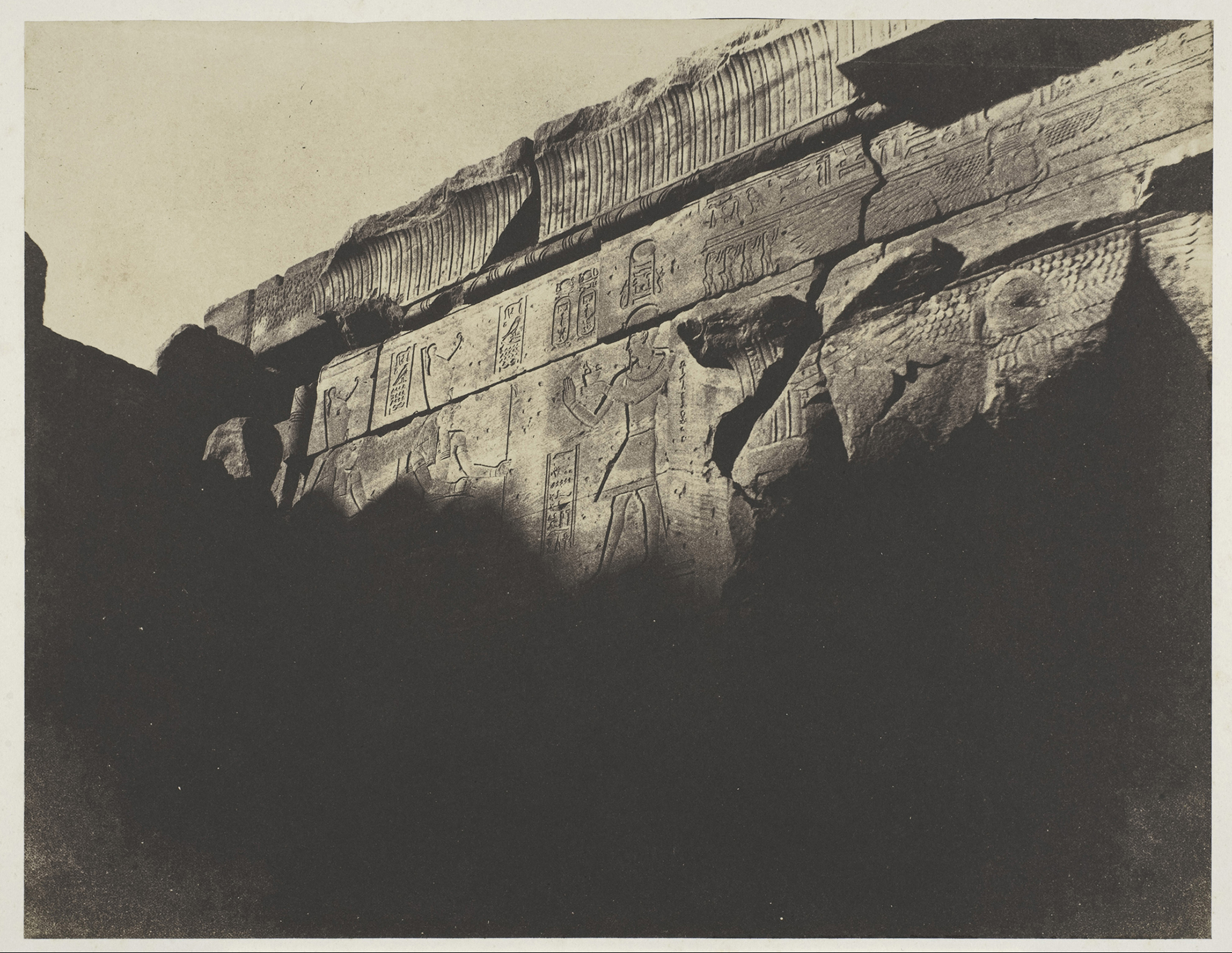John Beasley Greene: Signs and Wonders
John Beasley Greene, Pyramids of Giza. [Mr. Mariette’s site]. Excavation to the left of the Sphinx, 1853; The Metropolitan Museum of Art, New York, Gilman Collection, Purchase, Ann Tenenbaum and Thomas H. Lee Gift, 2005
Signs and Wonders is a thoughtful and instructive book showcasing the legacy of John Beasly Greene. This book makes it clear that to frame and understand his work better, we need to have some context and background about his life and the period he was living in. The writer Cory Kelly gives us that within the first pages, before we even get to look at his photographs. Throughout the book we follow a thread of information relating to the photographs we are looking at. When you flip through the pages, you are not only seeing these beautiful sepia plates, you are also gaining knowledge on the context and creative process of his work.
John Beasley Greene, Dakka. Southern Chamber of the Temple, No. 6, 1854; The Metropolitan Museum of Art, New York, Gilman Collection, Purchase, Joseph M. Cohen Gift, 2005
He became passionate about photography when it was emerging, and because he developed such a liking for it, he decided to use it as a tool for his primary work; archeology. He travelled to excavation sites and used photography to document different landscapes and archeological evidence such as temples, tablets written in cuneiform and much more.
John Beasley Greene, Karnak. Hypostyle Hall. Northern Wall, Interior. No. 3, 1854; Musée d’Orsay
John Beasley Greene, Giza. Sphinx, 1853–54; Bibliothèque nationale de France
In 1853, he visited Egypt, and used photography to record carved hieroglyphics found on ancient Egyptian monuments. Researchers and translators found that his photography could be very useful to decipher texts, instead of having to copy them by hand. John Beasly Greene’s work is an incredible mix of visual studies and archeological research. His photographs evoke the vast landscapes of Egypt where remains of old histories and culture stand still although sometimes in pieces.
John Beasley Greene, Dakka. Southern Chamber of the Temple, No. 6, 1854; The Metropolitan Museum of Art, New York, Gilman Collection, Purchase, Joseph M. Cohen Gift, 2005
John Beasley Greene, [Ramesseum, with the head from a colossus of Ramesses II], 1854–55; collection of Richard and Ronay Menschel
Photography had just recently been invented, which makes his photographs and work with them all the more fascinating. By the end of his trip, he had collected more than two hundred negatives! They were organized by themes: monuments, landscapes, sculptures and inscriptions. His wide collection of insightful photographs in Egypt gained him recognition among scholars and artists. The size of these photographs cannot appear on the page, but what we do see in this book are all the great details that early photography was able to capture.
John Beasley Greene unfortunately lived a short life (he died at the age of 24), but the work he did with his photography was so important that it still remains with us today, and helps us understand our histories and cultures better.



![John Beasley Greene, Pyramids of Giza. [Mr. Mariette’s site]. Excavation to the left of the Sphinx, 1853; The Metropolitan Museum of Art, New York, Gilman Collection, Purchase, Ann Tenenbaum and Thomas H. Lee Gift, 2005](https://images.squarespace-cdn.com/content/v1/5702ab9d746fb9634796c9f9/1567718655515-PM1A7U8COLD0P6JV2A9C/10_Greene.jpg)




![John Beasley Greene, [Ramesseum, with the head from a colossus of Ramesses II], 1854–55; collection of Richard and Ronay Menschel](https://images.squarespace-cdn.com/content/v1/5702ab9d746fb9634796c9f9/1567719074375-3PKNV1GNM8U7N1LNQESP/05_Greene.jpg)




